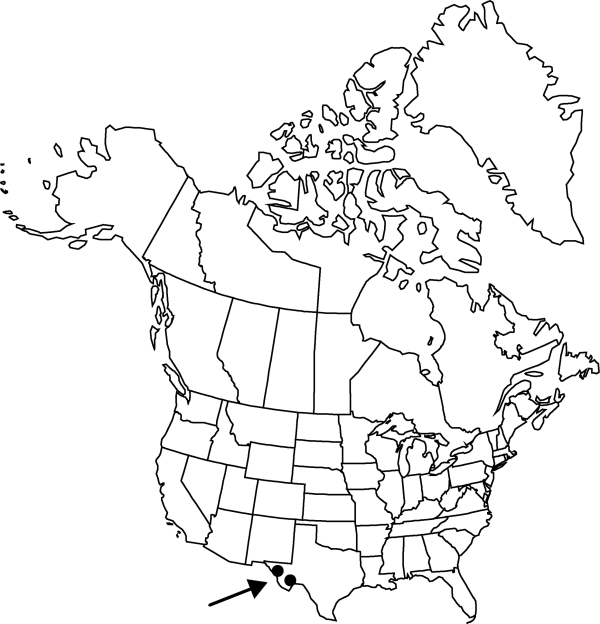Neolloydia conoidea var. conoidea
Stems: tubercles ascending but not overlapping sufficiently to called imbricate; axils copiously woolly at stem apex during flowering; hairs pure white, to 6 mm. Spines: radial spines appressed, whitish, often with dark tips (rarely all white or all brown), translucent or opaque, 0.3 mm diam. beyond bulbous basal portion; central spines black or dark-brown, 6–25 (–30) × 0.5–1 mm diam.; abaxial longest central spine porrect or angled slightly toward base of plant, 17–24 mm; adaxial 1–3 central spines angled toward apex of plant, 9–17 mm. Flowers: outer tepals whitish with greenish midvein; inner tepals bright-rose-pink, almost magenta, without darker midstripes; anthers 1 mm; style 7–11 × 1 mm. Fruits persistent, pale yellowish olive, proximal part hidden by hairs, off white with very slight pink tint. Seeds black, pyriform, 1.4–1.6 mm. 2n = 22.
Phenology: Flowering Apr–Jul; fruiting Nov.
Habitat: Chihuahuan desert scrub, edge of Tamaulipan thorn scrub, stony grasslands, usually on limestone
Elevation: [500-]800-1400[-2300] m
Distribution

Tex., Mexico (Coahuila), Mexico (Durango), Mexico (Nuevo León), Mexico (San Luis Potosí), Mexico (Tamaulipas), Mexico (Zacatecas)
Discussion
Neolloydia conoidea has the grooved tubercles and general appearance of many species of Coryphantha, but has flowers, fruits, and seeds most like those of Ariocarpus.
Neolloydia gautii L. D. Benson, known only from the type specimen, was alleged to be from Texas (L. D. Benson 1982). The controversial specimen, a greenhouse-grown plant with a J. N. Rose garden number, represents the common Mexican species Turbinicarpus beguinii (N. P. Taylor) Mosco & Zanovello (in the broad sense).
Selected References
None.
Lower Taxa
"elongated" is not a number.
